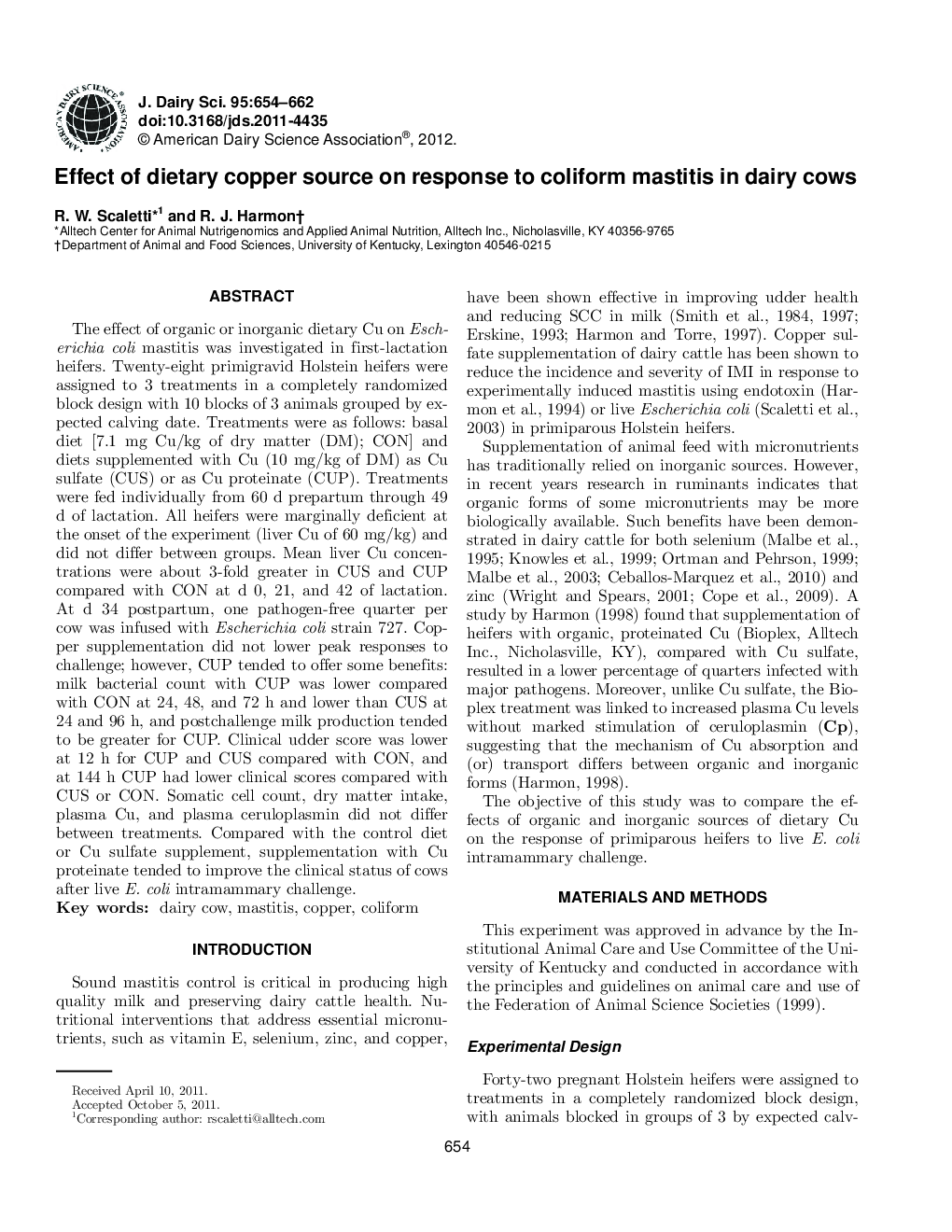| Article ID | Journal | Published Year | Pages | File Type |
|---|---|---|---|---|
| 10977431 | Journal of Dairy Science | 2012 | 9 Pages |
Abstract
The effect of organic or inorganic dietary Cu on Escherichia coli mastitis was investigated in first-lactation heifers. Twenty-eight primigravid Holstein heifers were assigned to 3 treatments in a completely randomized block design with 10 blocks of 3 animals grouped by expected calving date. Treatments were as follows: basal diet [7.1Â mg Cu/kg of dry matter (DM); CON] and diets supplemented with Cu (10Â mg/kg of DM) as Cu sulfate (CUS) or as Cu proteinate (CUP). Treatments were fed individually from 60 d prepartum through 49 d of lactation. All heifers were marginally deficient at the onset of the experiment (liver Cu of 60Â mg/kg) and did not differ between groups. Mean liver Cu concentrations were about 3-fold greater in CUS and CUP compared with CON at d 0, 21, and 42 of lactation. At d 34 postpartum, one pathogen-free quarter per cow was infused with Escherichia coli strain 727. Copper supplementation did not lower peak responses to challenge; however, CUP tended to offer some benefits: milk bacterial count with CUP was lower compared with CON at 24, 48, and 72Â h and lower than CUS at 24 and 96Â h, and postchallenge milk production tended to be greater for CUP. Clinical udder score was lower at 12Â h for CUP and CUS compared with CON, and at 144Â h CUP had lower clinical scores compared with CUS or CON. Somatic cell count, dry matter intake, plasma Cu, and plasma ceruloplasmin did not differ between treatments. Compared with the control diet or Cu sulfate supplement, supplementation with Cu proteinate tended to improve the clinical status of cows after live E. coli intramammary challenge.
Related Topics
Life Sciences
Agricultural and Biological Sciences
Animal Science and Zoology
Authors
R.W. Scaletti, R.J. Harmon,
